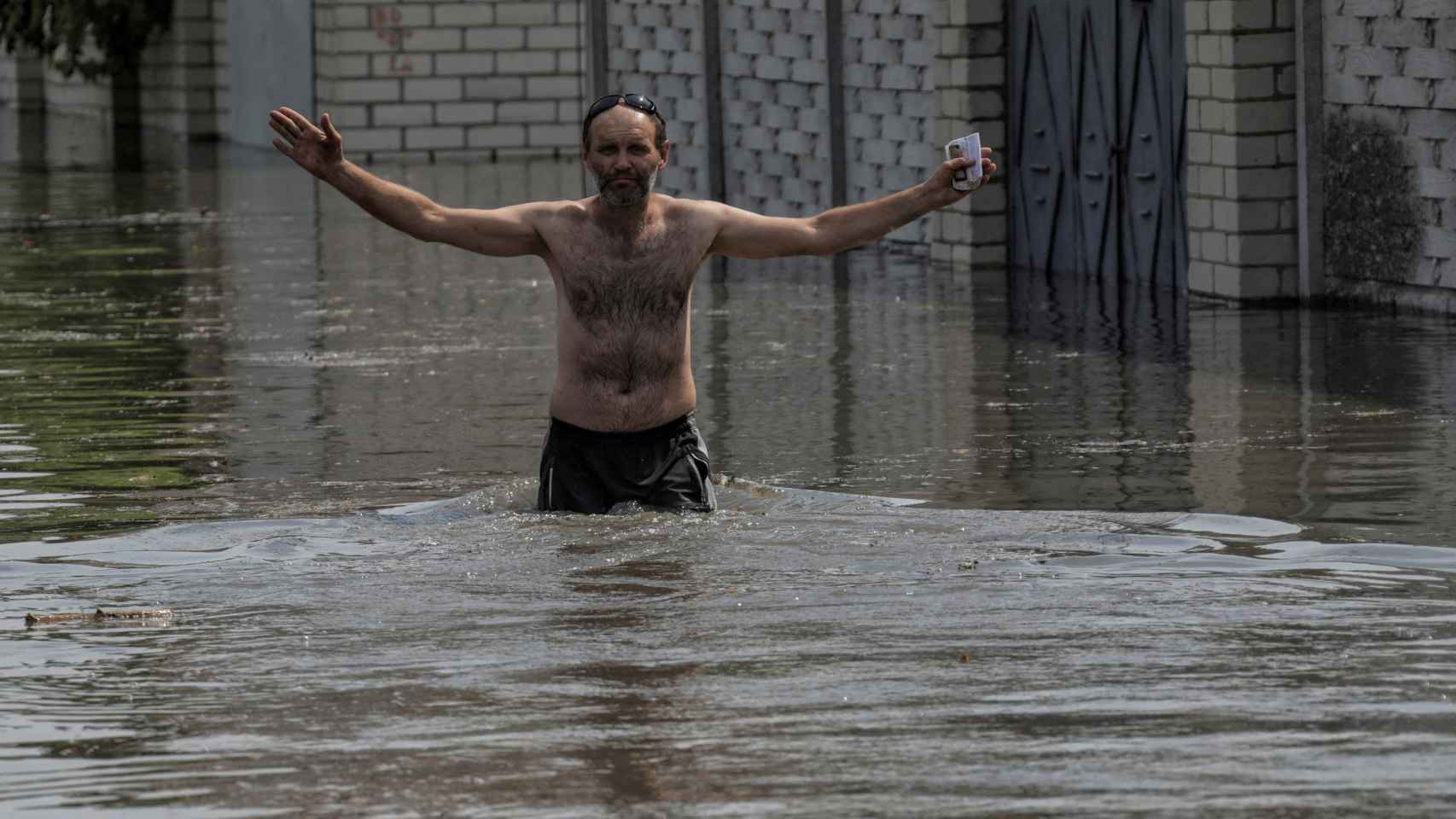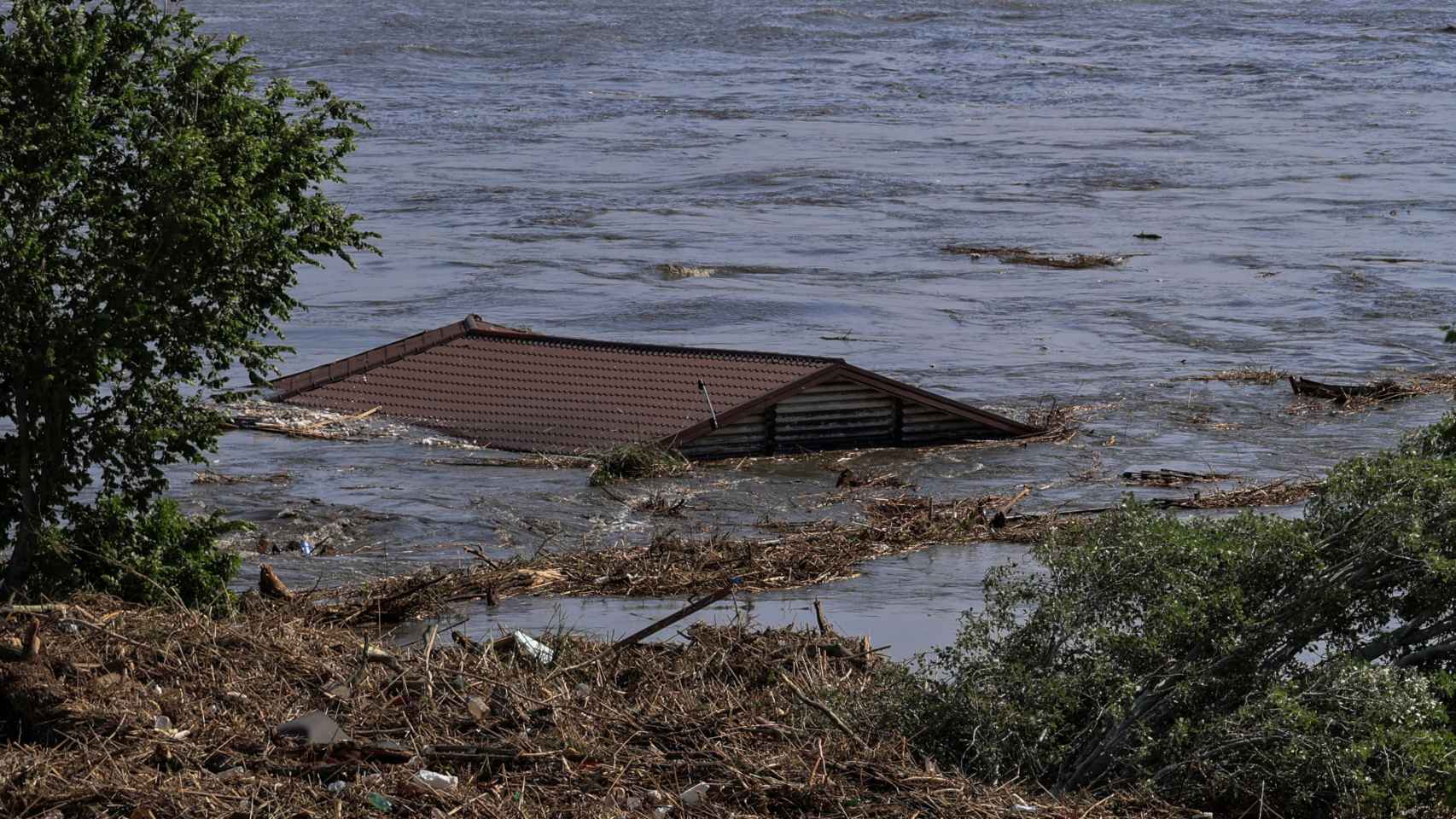As the waters of the Dnieper River continue to flood the towns on the southern bank after the collapse of the Nova Kakhovka dam, Ukraine and Russia continue their mutual accusations of sabotage. It is curious that neither party considers the possibility that the wear and tear of the intense bombardments in the area, together with the poor maintenance of the dam by the invading troops, has ultimately caused the collapse.
It is true that the long history of lies, criminal acts against the civilian population and desperate resources invites the thought of action provoked by Russia. Even more when US intelligence has pointed to the hand of the Kremlin after the attack. Despite everything, Zelensky remains optimistic and has assured his people (most likely with the intention of keeping the morale of the troops high) that “the breach of the Kakhovka dam does not affect the ability of Ukraine to recover its territory.” . That is, it does not affect the counteroffensive.
Be that as it may, the damage has already been done and its magnitude will not be known with precision until some time has passedwhen we see to what extent the flooding of the Dnieper in certain areas ruins crops and forces mass deportations.
[La jugada maestra de Putin o por qué la presa de Nova Kajovka es crucial: las tres ventajas que logra Rusia]
Although at the moment there are no signs of danger at the nearby Energodar nuclear power plant, whose cooling systems are supplied precisely by the water that is now running uncontrolled downriver, Nor can it be ruled out that in the future the reactors will have to be shut down for fear of overheating.. The same can be said for the supply to the Crimean peninsula, much of which also comes from the Dnieper. At the moment, in any case, it does not seem like an imminent problem.
Goodbye to the “easier” attack
Asking who benefits from an environmental tragedy is difficult to answer because, strictly speaking, it benefits no one. Now, whoever is hurting the most is, without a doubt, whoever intends to stay on those lands, which we understand to be the Ukrainian Government. Having said this, in purely military terms, and in the midst of the announced counteroffensive a few kilometers away, it is good to try to analyze how what happened affects the Ukrainian strategy.
Situation of eastern Ukraine.
Christina Pita
The first thing will be to wait and see how far the disaster goes, but what we can foresee is a widening of the Dnieper channel to the southwest, with the consequent flooding of the surrounding land… and an opposite effect precisely in the area that goes from the hydroelectric power plant to the nuclear power plant, already in Zaporizhia, very close to the key city of Vasiliivka. If so, any attempt at an amphibious operation consisting of crossing the Dnieper by force at the height of the capital Kherson, as was rumored at the time, is ruled out: not only will the stretch of water be longer, but they will meet on the other side with mud and mud, causing real chaos in those troops that manage to cross safely.
The same could be said even in areas where shifting earth is to replace water., that is, on the Nikopol-Energodar axis. There it would be easier to cross the river due to its reduced flow, but on the other side they would again find muddy terrain that would not help the advance of the Leopards, the Abrams and the different armored vehicles that Ukraine has been acquiring throughout the winter. and the spring. Yes, a bridgehead could be established to help further action when the land dries up, but that can take a long time.
[La inteligencia de EEUU señala que “Rusia está detrás del ataque a la presa de Nova Kajovka”]
In any case, this possibility of an amphibious attack was already very remote due to what was risky about it. It seemed to make more sense to skirt the Dnieper in the Vasiliivka area and from there advance along the southern bank of the river, “cleaning” the area of Russian defenses, mines, and regiments. Can that be done now? That is the doubt, but in principle there seems to be no reason to say no. It could be enough to leave behind that no-man zone that is going to cause the rise of the Dnieper and try the same operation, but from a few kilometers further south. It is more difficult, of course, but not impossible.
Will the Russian defenses hold?
Obviously, there is an important factor in all this: with amphibious attack from the west now completely ruled out, Russia is only going to have to guard one point of entry. You already know positively that the attack on the south of Zaporizhia and, above all, on Kherson, is going to come from the east. Not in vain, Ukraine has been shelling the Tokmak-Berdiansk axis for weeks and on Monday tried to take the cities of Novodonetsk and Novodarivkathe latter, just over 100 kilometers from the nuclear power plant.
A man walks through the flooded streets of Kherson after the collapse of the Nova Kakhovka dam.
Reuters
This will allow the troops to focus on a single point of defense, almost vertically on the Vasiliivka-Melitopol axis… although, as far as we know, the defenses have so far been organized horizontally, parallel to the Dnieper River, in anticipation of the unlikely amphibious attack. In fact, we don’t know to what extent those defenses will be damaged. Presumably they will have to be abandoned, forming a kind of no man’s land, as we advanced before, which, strictly speaking, harms Russia more than it benefits it.
With everything, Ukraine will have to change its strategy on the southern front and adapt to the new circumstances. It cannot be a coincidence that this happens the day after the start of the counter-offensive as such, and in this sense, it is true that Putin has bought time with his alleged maneuver. That said, the ability so far of General Zaluzhnyi as head of the Ukrainian Army and that of his right-hand man, Colonel General Syrskyi, to adapt to changes in scenery has been remarkable and, in any case, a possible future remains to be seen. advance along the southern bank of the Dnieper, wherever it is.
The collapse of the dam has flooded homes in nearby towns.
Reuters
Damages on the civilian population
There is no doubt that the closure, even momentarily, of the Nova Kajovka hydroelectric plant will have undesirable effects on both sides of the river, since there are many towns, both Ukrainian and pro-Russian, who depend on the energy that produces in it. The fact that summer is already here and therefore the needs for heat and light are reduced will help, but only in the short term.
[Zelenski: “La rotura de la presa de Kajovka no afecta a la capacidad de Ucrania de recuperar su territorio”]
In the absence of specifying responsibilities, the act sounds like scorched earth politics. Faced with the impossibility of maintaining the territories in a face-to-face fight, the Kremlin has probably chosen to flood them and make that area an unlivable place for months, perhaps years. These types of attacks against civil infrastructures and the terrible consequences that they will have on the lives of the locals and on the fauna of the area are to be considered war crimesto. And so far, war crimes have only been cheered on by one side in the dispute.




